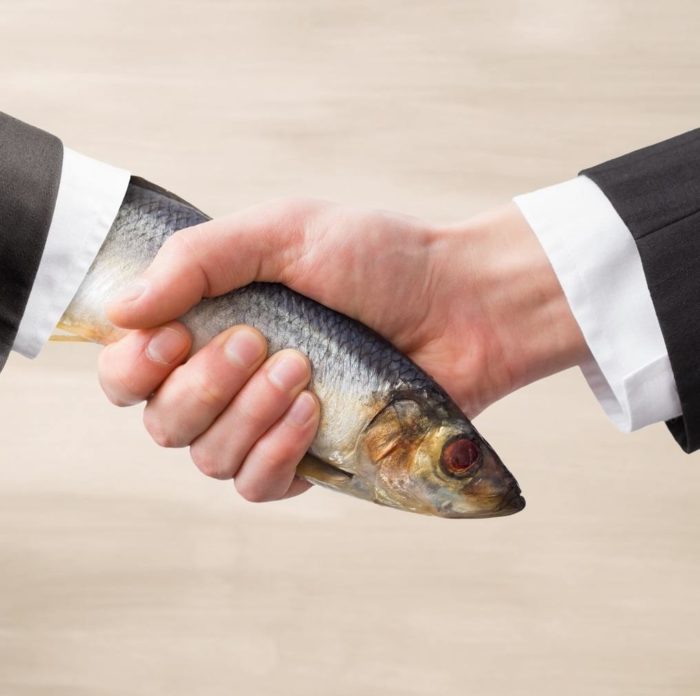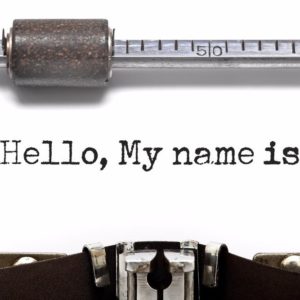

3 Ways To Spot A Bad Handshake
I’ve spent the last few blog posts focusing on how you interact with people remotely (writing emails, composing your LinkedIn summary). So this time I’m flipping things back to the old-fashioned way of interacting: in person.
I’m talking specifically about shaking hands
The bit where you walk towards the other person, extending your arm with an open palm to, historically, show you’re unarmed and therefore not a threat.
The value to your personal brand of having a good handshake – and the devaluing effect of a bad one – should never be under-estimated. That’s why you’ll often find me in my workshops critiquing attendees’ handshakes to make sure they’re getting it right. (There’s always a lot of nervousness when we kick off, as people over-think what they’re doing, but it’s a valuable exercise.)
And having shaken literally hundreds of hands, I’ve discovered there are three visual clues you can use to spot a bad handshake – alongside the clues you’ll be feeling from the handshake itself – so I wanted to share them with you.
Here’s the lowdown
Visual Clue 1 – Mind the gap
People assume that, when you get a weak handshake, it’s all down to the fact the other person’s grip isn’t strong enough. But that’s only part of the problem. The real issue is the placement of your hands in the first place.
If you want to get your handshake off to the right start, it’s important you get the crook of your thumb (the bottom of the curve between your thumb and index finger) placed firmly into the crook of the other person’s thumb – with zero gap.
Get that right and when you then wrap your fingers around the other person’s hand, you’ll instantly have a firmer grip.
Now take a look at this photo of Theresa May shaking hands with Donald Tusk. (Apologies if you’re sick to the back teeth of Brexit.)

And take a closer look at the distance between the crooks of their thumbs.

You can clearly see that gap, denoted by the yellow marker, and instantly know that could have been a much stronger handshake if the placement of their hands had been different.
Visual Clue 2 – It’s a wrap
The next visual clue that a handshake is going to be perfect or pants is the placement of the fingers.
The right way to do it is to have all four fingers going in the same direction: down towards the lower edge of the other person’s palm, then wrapping around, with no gaps between the fingers. Then the thumb wraps around the upper edge of their palm and points back towards your own fingers – as the following photo shows. (I have tiny hands, so my index finger doesn’t quite make it all the way around, but you get the idea.)

What people often do though – and I know because I’ve seen it time and time again – is place their thumb along the top of the other person’s hand, pointing it towards their wrist, just as I’m demonstrating below.

The effect of moving your thumb from the back of the person’s hand to the top means you’ve removed a fifth of your digits from the grip, lessening any firmness you might have by 20%.
It’s also harder for the fingers to get into position (note that you’re now seeing the pads of my fingers, not my finger nails).
Visual Clue 3 – Leaving your mark
The most common type of bad handshake is what I call the ‘limp fish’, which the previous two points deal with. But I’ve saved this last visual clue for the people who sit at the other end of the scale: the bone crushers.
It’s not hard to tell when you’re getting a handshake from one of them – you’ll feel like your fingers are being held in a vice. But if you’re the person delivering the grip, you may not be aware you’re doing it.
Keeping your eye on the back of the person’s hand can help.
If you’re pressing too hard, when you immediately end the handshake the skin on the back of the other person’s hand, where you were digging your fingertips in, will be white. And if it was a really tight grip, those white marks will turn to red as the blood returns.
But perhaps the easiest visual clue to check if you’re a bone crusher is to look and see if the other person’s face is contorted with pain! (Or at the very least a slight grimace.)
The best way to spot if you’re making these mistakes is to find someone to shake hands with and evaluate what you see. You may just discover an inadvertent mistake. Or (and feel free to be smug) you may end up confirming you’re an excellent shaker of hands.







The best analysis and guidance on handshakes I’ve ever received – can’t wait to find a hand to shake this morning! However my daily dilemma when meeting someone of the opposite sex now appears to be when to shake hands, when to kiss cheeks (and is it one or both, and right or left first?), and when to hug. Looking forward to your thoughts……….
That’s the one thing that’s always stumped me when it comes to finding a black and white answer. I might still canvas my connections and see what they come up with.
Over the years I have gone off the idea of shaking hands. Firstly, some of those who do it, especially with overt enthusiasm, are trying to be assertive which I find pointless because it doesn’t work. Secondly, you seldom know where they’ve been or what they’ve been doing. They may just have emerged from the lavatory, eaten a prawn sandwich, handled a wet dog or been tampering with themselves. Call me Mr Fussy, and you’d probably be right, but I prefer whenever appropriate a smile and a verbal greeting.
That’s why sales of hand sanitiser have boomed! ✋
[…] I wrote my previous post about how to deliver a decent handshake, a number of people asked for further advice about the […]